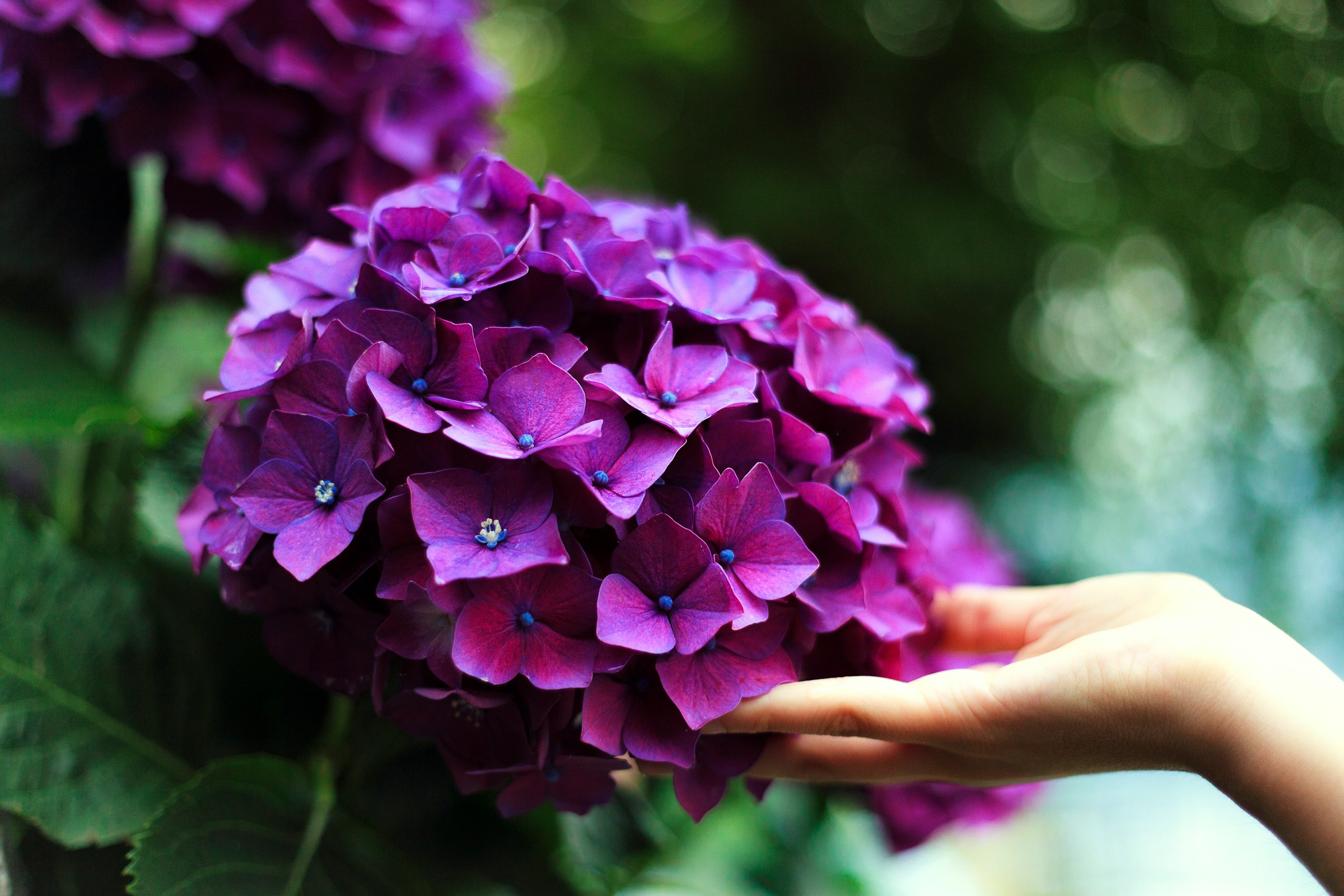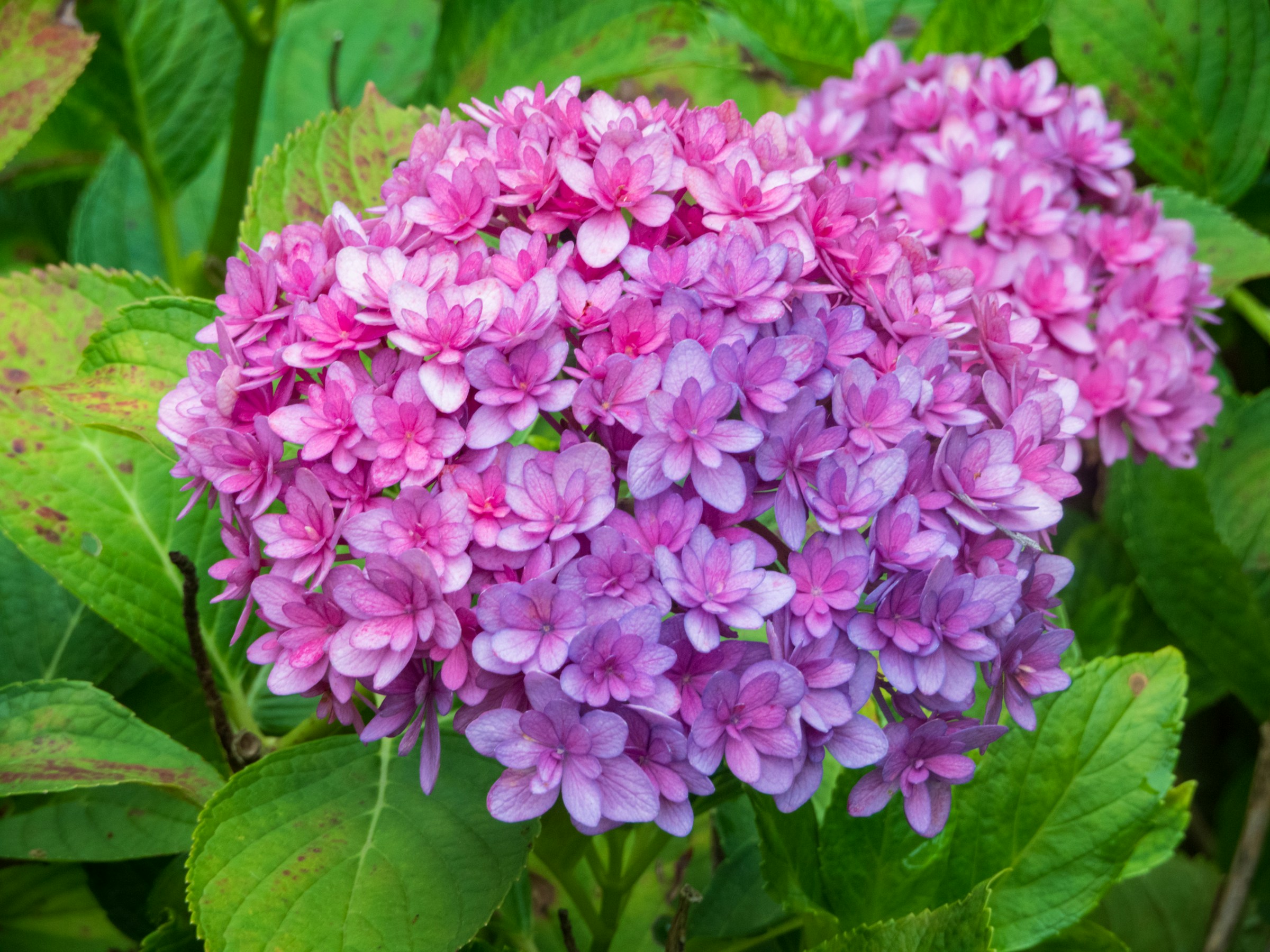How to Grow and Care for Purple Hydrangeas

Introduction
Purple hydrangeas produce flowers in shades of purple. These plants include several species and varieties known for their large, showy flower clusters. The color can be light lavender to deep violet, depending on factors such as soil pH, the specific variety, and growing conditions.
Varieties of Purple Hydrangeas
There are several hydrangea varieties. Before selecting a variety, consider your local climate, soil conditions, and space available because different varieties have specific growth habits and requirements.
Here are the popular varieties:
- Hydrangea macrophylla ‘Endless Summer’: Hydrangea macrophylla produces blooms in shades ranging from light lavender to deep purple which depend on soil pH. This type of hydrangea is known for its continuous blooming throughout the summer.
- Hydrangea macrophylla ‘Nikko Blue’: This variety can have blooms that range from blue to purple. For its reliability and beauty, it is popular to all gardeners.
- Hydrangea macrophylla ‘Cityline Paris’: This compact variety produces vibrant purple flowers. This variety is well-suited for smaller gardens or containers. Also it has a dense, bushy growth habit.
- Hydrangea paniculata ‘Pinky Winky’: Primarily known for its pink and white flowers but it can develop a beautiful purple tint as the blooms age, providing a unique color transition.
- Hydrangea quercifolia ‘Snowflake’: This variety has large, showy blooms that start white and can transition to shades of purple as they mature. This variety is known as the oakleaf hydrangea. Attractive foliage is also offered by it.
Benefits of Purple Hydrangeas
Purple hydrangeas offer several benefits. Purple hydrangeas add a splash of color and elegance to gardens, landscaping, and floral arrangements. They are focal point in any setting because of their large, rounded flower clusters. They are famous for their versatility. They can adapt to various garden styles, from formal landscapes to informal cottage gardens. You can plant them in containers and as part of mixed flower beds. They have long blooming period often from early summer to fall, providing extended visual interest. Once established, hydrangeas are relatively low-maintenance. They require minimal pruning. Also they need straightforward watering and fertilizing.
They can thrive in different soil conditions. While their color can be influenced by soil pH, they are generally adaptable. Purple Hydrangea can grow in a range of soil types. They also attract pollinators such as bees and butterflies, contributing to a healthy garden ecosystem.
The large blooms of purple hydrangeas make excellent cut flowers for arrangements and add beauty to indoor spaces and special events. If you grow purple hydrangeas into your garden or landscape, you can not enjoy only its visual appeal but can enjoy the practical benefits they offer.
How to Grow and Care for Purple Hydrangeas
At first choose the Right Variety. You can select a hydrangea variety. Hydrangea macrophylla (bigleaf hydrangea) can be selected as they are known for producing purple blooms. ‘Endless Summer’ or ‘Nikko Blue,’ also can have purple hues depending on soil conditions. Prepare the soil properly.
Well-drained and fertile soil is best for purple hydrangea. To achieve purple blooms, the soil should be acidic to neutral pH (around 6.0 to 7.0). Test your soil and add organic matter like compost can help improve soil structure and fertility. Choose e planting location with morning sun and afternoon shade. These flowers generally thrive in locations with filtered sunlight or partial shade. When planting, Space your hydrangeas about 3-5 feet apart to allow for their growth. You have to dig a hole twice the width of the root ball and just as deep. Then place the plant in the hole, making sure the top of the root ball is level with the surrounding soil. Watering is also very important in this purpose.
You must keep the soil consistently moist but not waterlogged. Regularly watering, especially during dry spells is good for purple hydrangea. To encourage strong root development, you can water deeply. Balanced, slow-release fertilizer is needed in spring to support healthy growth.
Over-fertilizing is not good for them because it can lead to excessive leaf growth at the expense of flowers. Pruning is must in late winter or early spring. Removing dead or damaged wood. Avoid heavy pruning that can remove next season’s flower buds. Mulching can be done. A layer of mulch should be applied around the base of the plant to help retain moisture, regulate soil temperature, and suppress weeds.
By following these steps, you can grow purple hydrangeas and produce beautiful purple blooms.
Conclusion
Vibrant and varied hues of Purple Hydrangea range from soft lavender to deep violet. They can enhance the visual appeal of outdoor spaces and floral arrangements. They also offer long blooming period, low maintenance requirements, and adaptability to different soil conditions. They attract pollinators and you can use them as cut flowers. Provide the right care, proper watering, soil management, and strategic planting to enjoy the beauty and elegance of purple hydrangeas throughout the growing season.

4 Responses